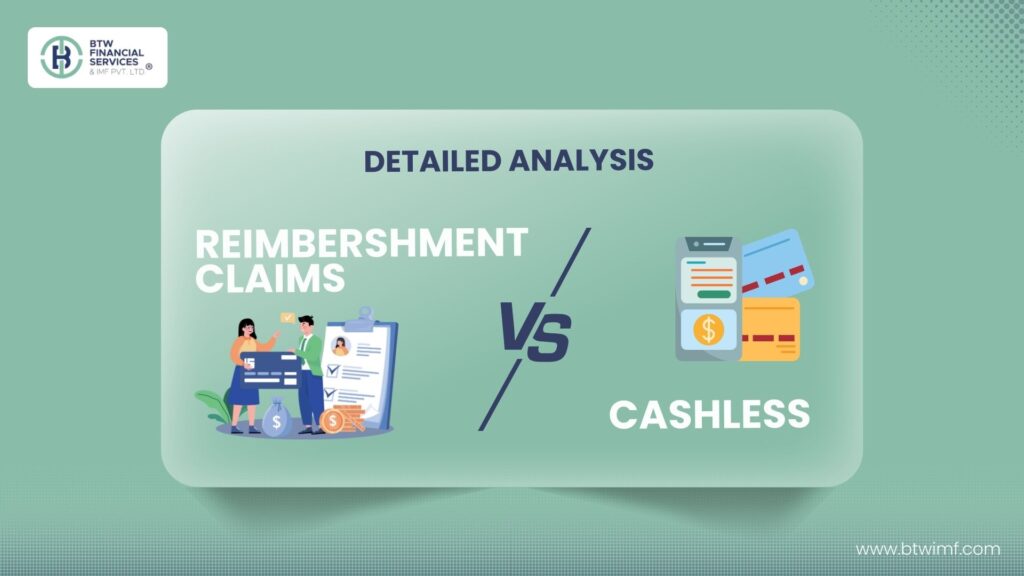Detailed Analysis: Cashless vs. Reimbursement Claims
Summary
- Cashless Claims:
- Best for: Emergencies, High-Cost Services
- Pros: Convenient, Reduced Admin Burden, Stress Reduction
- Cons: Limited Provider Choice, Potential for Higher Costs
- Reimbursement Claims:
- Best for: Routine, Low-Cost Expenses, Out-of-Network Preferences
- Pros: Flexible Provider Choice, Transparent Costs, Negotiating Power
- Cons: Immediate Financial Burden, Administrative Hassle
Choosing the Best Approach:
Consider the Nature of Expense, Individual Preferences, Policy Terms, Financial Situation, and Provider Quality to make an informed decision between Cashless and Reimbursement Claims.
Table of Contents
- Introduction
- Cashless Claims
- How it Works
- Pros
- Cons
- Scenarios Where Cashless Claims Excel
- Reimbursement Claims
- How it Works
- Pros
- Cons
- Scenarios Where Reimbursement Claims Excel
- Choosing the Best Approach
- Decision-Making Factors
- Tailoring Your Choice to Specific Needs
- Future Considerations and Trends
- Conclusion
1. Introduction
In the realm of financial transactions, particularly within insurance, employee benefits, and travel expenses, two dominant models facilitate the settlement of expenditures: Cashless Claims and Reimbursement Claims. Each model boasts its unique set of advantages and drawbacks, catering to diverse needs, preferences, and scenarios. This detailed analysis aims to dissect both models, providing clarity on which might work best for various situations, helping individuals and organizations make informed decisions.
2. Cashless Claims
How it Works:
- Establishment of Network: The payer (insurance company, corporate entity, etc.) forms agreements with a network of service providers (hospitals, hotels, vendors, etc.).
- Service Availment: The beneficiary (policyholder, employee, etc.) avails of the service from a network provider.
- Direct Billing: The service provider bills the payer directly for the eligible expenses.
- Settlement: The payer settles the bill with the provider, ensuring the beneficiary incurs no out-of-pocket expense for covered services.
Pros:
- Convenience: Eliminates the need for immediate payment by the beneficiary.
- Reduced Administrative Burden: Minimizes paperwork for both the beneficiary and the payer.
- Stress Reduction: Particularly beneficial in emergency or high-stress situations.
- Predictable Costs: Often includes a clear understanding of costs upfront.
Cons:
- Network Limitations: Restricts beneficiaries to the payer’s predefined network.
- Pre-approval Requirements: May necessitate prior authorization for certain services, potentially delaying access.
- Potential for Higher Costs: Payers might agree to higher rates with providers, increasing overall expenditure.
- Less Transparent Pricing: Beneficiaries may not always be aware of the exact costs.
Scenarios Where Cashless Claims Excel:
- Emergency Medical Situations: Reduces stress and financial burden.
- High-Cost Procedures: Minimizes upfront financial strain.
- Corporate Travel Insurance: Streamlines expense management for employees.
3. Reimbursement Claims
How it Works:
- Service Availment: The beneficiary receives a service and pays out of pocket.
- Claim Submission: The beneficiary submits a claim to the payer, including all necessary receipts and documentation.
- Verification and Reimbursement: The payer verifies the claim and reimburses the beneficiary for eligible expenses, often after deducting any applicable deductibles or co-pays.
Pros:
- Flexibility in Provider Choice: Beneficiaries are not limited to a specific network.
- Negotiating Power: Direct payment can facilitate better rates with providers.
- Transparent Costs: Beneficiaries are fully aware of the service costs.
- Universal Applicability: Can be used for a wide range of expenses.
Cons:
- Immediate Financial Burden: Requires beneficiaries to have upfront funds.
- Administrative Hassle: Involves more paperwork and potential follow-up.
- Potential Delays in Reimbursement: Can affect the beneficiary’s cash flow.
- Deductibles and Co-pays: May still incur additional out-of-pocket expenses.
Scenarios Where Reimbursement Claims Excel:
- Routine, Low-Cost Expenses: Offers flexibility and potentially lower costs.
- Non-Emergency Situations: Allows for more deliberate decision-making.
- Preference for Out-of-Network Providers: Accommodates beneficiaries with specific provider preferences.
4. Choosing the Best Approach
Decision-Making Factors:
- Nature of Expense (Emergency, High-Cost, Routine, Low-Cost)
- Individual/Organizational Preferences (Convenience, Cost Control, Provider Choice)
- Specific Terms and Conditions of the Policy/Agreement
- Financial Situation of the Beneficiary
- Availability and Quality of In-Network Providers
Tailoring Your Choice to Specific Needs:
- Assess Your Expenses: Identify the types of expenses you most frequently incur.
- Evaluate Preferences: Weigh the importance of convenience, cost, and provider choice.
- Review Policy Terms: Understand the specifics of your insurance or expense policy.
- Consider Financial Resilience: Reflect on your ability to handle upfront costs.
- Research Network Providers: Ensure in-network providers meet your quality and accessibility standards.
5. Future Considerations and Trends
- Digitalization: Expect enhanced digital platforms for smoother claim processing and greater transparency.
- Expansion of Networks: Payers may broaden their networks to offer more choices while maintaining cost efficiency.
- Personalized Plans: Increased tailoring of plans to accommodate individual preferences and expense patterns.
- Integration of AI in Claim Processing: For faster, more accurate claim settlements.
Note: Always check blacklisted hospitals because if you opt for cashless or reimbursement, your claim may be denied. if the hospital is Blacklisted.
6. Conclusion
The choice between Cashless Claims and Reimbursement Claims is not one-size-fits-all. By understanding the intricacies of each model and carefully considering your specific travel insurance needs, preferences, and the nature of your expenses, you can make an informed decision that optimizes convenience, cost, and satisfaction.
Whether you prioritize the hassle-free experience of cashless claims for emergencies or the flexibility of reimbursement claims for routine expenses, a thoughtful approach will ensure the best possible outcome.





